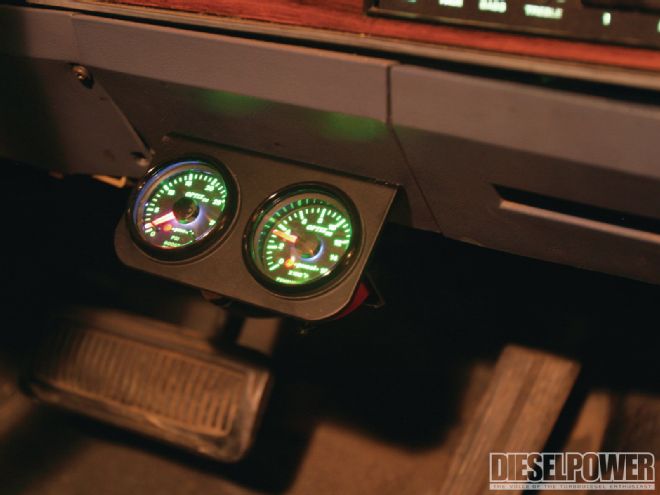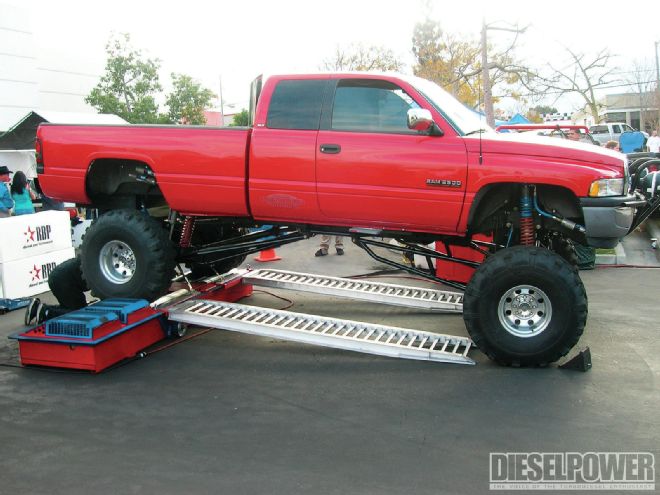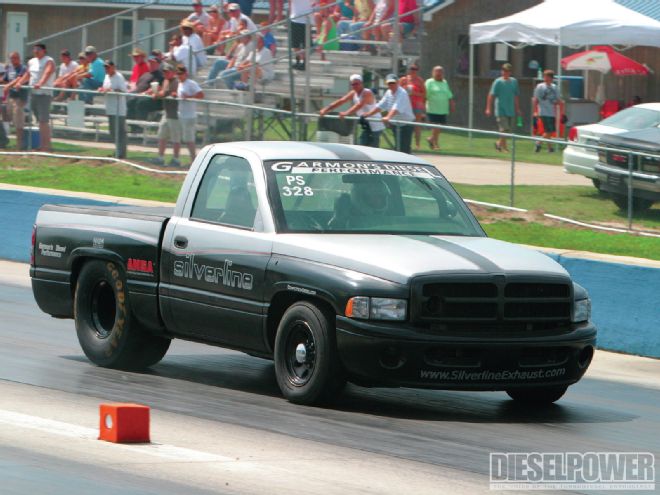With diesel performance hitting the mainstream market, enthusiasts are now concerned with getting the most excitement they can out of their diesels on a regular basis, which includes speed, power, and awesome acceleration. Using our own Triple Threat Dodge project truck as an example, we’ll show you how to get the best performance out of whatever type of diesel you have.

| drive To Win dodge Ram Front Three Quarter
Traction
If you have four-wheel drive, use it! In fooling around with Triple Threat, our 430-rwhp ’95 Dodge 2500, we found we could spin the rear tires all the way to 50 mph if we just floored it from a standing stop. In four-wheel drive, on the other hand, we could do 15-psi boosted launches and not break traction at all. Our 0-to-60-mph times in four-wheel drive dropped more than a second. The truck went from 6.4 seconds (two-wheel drive) to 5.2 seconds (four-wheel drive). That’s Mustang and Camaro territory!

| Four-wheel-drive launches usually won’t break anything on stock (or near-stock) trucks, but independent front suspension (IFS) equipped Duramax diesels are an exception to this rule. Especially with larger tires, the monster torque from a diesel engine can bend or snap front tie-rods and centerlinks, unless they are upgraded.
Although it’s not practical to drive around in 4x4 mode all the time, if you’re ready to race from a standstill, four-wheel drive is the only way to go. Some people shift out of four-wheel drive after 50 mph or so, so we’d just recommend leaving it on. You’re not going to hurt anything, and it’s just one more thing to remember to do. If you own a diesel that’s two-wheel drive, you’re going to be in a constant battle for traction—even if you choose to run a grippy, DOT-approved street tire.
Launching
To get a good launch from a standstill, place one foot on the brake and ease into the throttle with the other. The truck will start to spool the turbo until the rpm limit (stall speed) of the torque converter is reached, or the truck will start to push through the brakes. Although a boost gauge is helpful when trying to get a good start, the engine’s tachometer can also be used. We found that launching at 2,200 rpm with our ’95 produced hard, consistent launches. When doing this, keep the truck stalled up for as little time as possible (just a couple of seconds), so transmission damage (overheating) doesn’t occur. Giving the vehicle liberal amounts of throttle and then holding it with the brakes produces an immense amount of heat in the transmission, so keeping the time during which the vehicle is against the converter (also referred to as stalled up) to a minimum is very important. Another thing to remember is boosted launches are hard on a truck, so they should be done every once in a while, as opposed to every time you leave the house in the morning. With a two-wheel-drive truck, start by trying to launch at about 1,800 to 2,000 rpm, or 5 psi, rather than doing a high-rpm, high-boost launch.
Shifting
After the launch, the truck itself will do most of the work, and the only thing the driver needs to worry about is holding on, steering, and watching gauges. Most of the time, diesels are quickest and fastest if shifted early in their powerbands. A 3,000-rpm shift point is a good place to start for most trucks and can be adjusted up from there. For instance, we found out that the new ’11 Duramax was shifting at 2,900 rpm—well before its 3,100-rpm power peak. In the case of the new Chevy, its quickest times were achieved by manually shifting the truck. Trucks with ported cylinder heads or big turbos can be wound out to 4,000 rpm or more, but for stockers, keep the shift points low. Our Cummins-powered ’95 Dodge was no exception, as letting the transmission shift itself at about 3,200-rpm produced the best acceleration numbers.

| While many out there think big, huge plumes of smoke look cool, it’s really the sign of inefficient combination. If your truck is still trying to spool its turbo at 2,500 rpm, it might be time to look into a smaller unit.
Hitting the Dragstrip
Once you’ve gotten comfortable with launching your truck and shifting, it’s time to hit a dragstrip. Most people have at least an eighth-mile track within 100 miles of where they live, and dragstrips are a safe way to experience the speed and acceleration hopped-up diesels can offer—without being unsafe or running into trouble with the law. If your truck is just mildly modified or chipped, it will just need to be in good working order, with a radiator overflow tank and batteries that are strapped down tight. It’s a good idea to bring an M2005-or-newer-rated helmet, as it becomes mandatory to have one if your truck runs quicker than 13.99 seconds in the quarter-mile, or 8.59 seconds in the eighth-mile. Since our ’95 Dodge ran a best of 8.85 seconds at 79.3 mph in the eighth-mile, all we needed was a good launch and to hang on the rest of the way down the track!

| While diesels have made leaps and bounds in the past few years, don’t be fooled into thinking you can pick on any gasoline-powered drag vehicles at the track. Dedicated race cars will still—more often than not—eat you for lunch.
Common Dragstrip Mistakes
- Missing the first return-road turnoff and turning around on the track to go back (never do this—there is almost always a second return-road exit!)
- Staging with the rear tires
- Ignoring the starting line official’s instructions
- Leaving the line with too much turbo boost
- Not pulling over to the side of the track if there is a problem
- Leaving the starting line on the green light (leave on the last yellow light)
- Not having secured batteries
- Cutting off another racer to make the exit

| drive To Win diesel Truck At The Drag Strip


